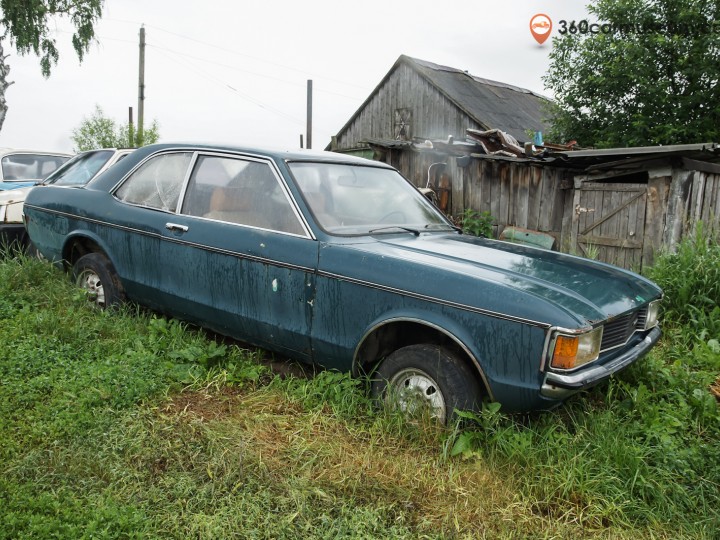1973 Ford Granada 2-door Saloon
The March 1972 released Granada succeeded the British Ford Zephyr, and the German P7-series as Ford's European executive car offering. Mechanically, the European Granada conformed to Ford convention, the initial range using the Ford Essex V4 unit in 2.0 L displacement, and the "Essex" V6 engine in 2.5 and 3.0 L capacities. German models employed a Ford Taunus V4 engine in 1.7 L displacement, or the 3.0L Essex V6, or, more commonly the "Cologne" V6 in 2.0, 2.3 or 2.6 L capacities. The V4 was later replaced by the Pinto unit. The car generally followed mechanical layout of its predecessors Ford Zephyr/Zodiac, utilizing a coil sprung independent rear end, although front MacPherson struts were replaced by double wishbones, introduced 18 months earlier in smaller TC Cortina and Taunus. On the other hand, the Granada – like Ford 17M/20M/26M – featured drum brakes at rear, as opposed to the Ford Zephyr/Zodiac rear disc brakes.
The car was available as a four-door saloon, a five-door estate (Turnier) and a two-door fastback coupé. The early (1972–73) coupé had slightly different sheet metal; a more pronounced coke bottle styling. In 1974 the coupé was revised, with more straight lines. A two-door saloon joined the range in May 1973.








